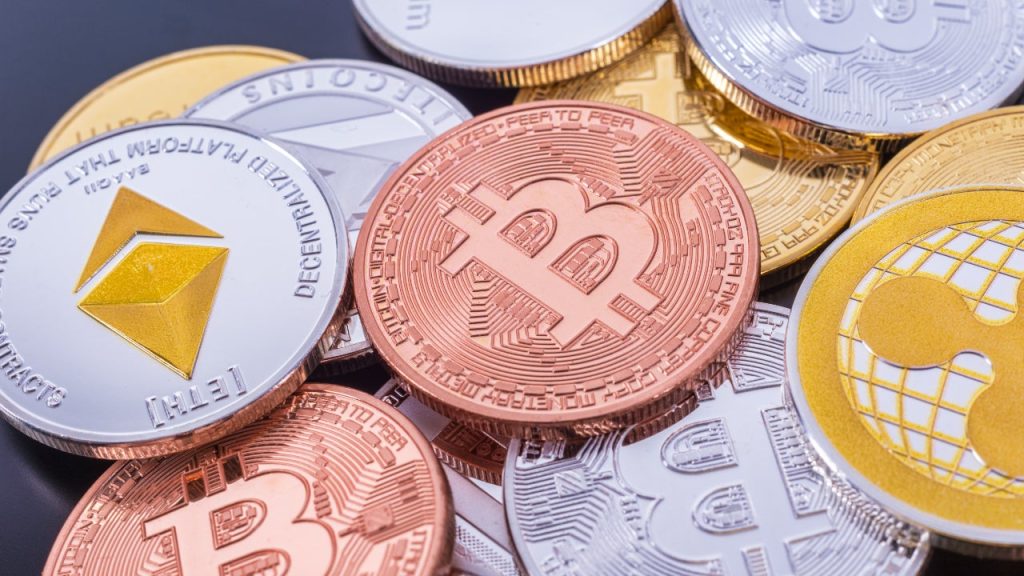Bitcoin ushered in the era of cryptocurrency in 2009, and it quickly became the name whenever anyone talked about digital currencies. In fact, Bitcoin dominated the burgeoning scene so much that any other crypto was considered an “altcoin,” an alternative to Bitcoin. And that name stuck, though today there are literally thousands of competitors to the original digital currency.
Here are the basics on altcoins, the ones to watch this year and whether altcoins will overtake Bitcoin.
What are altcoins?
An altcoin is an alternative cryptocurrency to Bitcoin, which itself was the only crypto coin at one point in time. During its early years Bitcoin dominated the field so much that other rivals were defined in relation to the original cryptocurrency. It was Bitcoin — and everything else. So whatever was not Bitcoin was, somewhat derisively, called altcoins or perhaps, even less charitably, sh*tcoins, in a rhyme with the original digital currency.
So altcoins are any cryptocurrency that is not Bitcoin. In the early years of cryptocurrency, this kind of definition made a lot of sense, since Bitcoin occupied most of the market’s attention, and competitors made up dozens or even a few hundred alternative coins. Nowadays, some experts put the estimate of the number of individual cryptocurrencies at about 15,000.
That said, Bitcoin remains the largest cryptocurrency by far, with a market capitalization — the value of the total number of coins in existence — at more than three times the second largest player, Ethereum, according to CoinMarketCap.com. The size of other players drops quickly from there.
Types of altcoins
With literally thousands of cryptocurrencies in existence, speculators looking for altcoins are spoiled for choice. But so much trading coalesces around the largest players and those with some of the best technical specs, such as fast transaction times.
Mining-based coins
Mining-based coins are mined into circulation by computer networks that solve complex mathematical problems often requiring a lot of energy. The world’s largest cryptocurrency — Bitcoin — is a mining-based coin but so are many altcoins.
Stablecoins
Stablecoins are a kind of cryptocurrency whose value is pegged to that of another asset, typically the U.S. dollar. Stablecoins track the underlying asset, trying to keep the price of the coin equivalent to the currency. Often, stablecoins are backed by assets such as actual dollars (though often bonds and other assets) giving a stablecoin a basis in real currency. Examples of stablecoins include Tether and USD Coin.
Despite their moniker, sometimes stablecoins are anything but stable. TerraUSD, a stablecoin pegged to the dollar, made headlines in May 2022 when it collapsed to just pennies on the dollar. The coin’s automatic stabilizers couldn’t keep up with orders from traders looking to sell their positions.
Security tokens
A security token is a kind of coin that represents a fractional interest in another asset. For example, a piece of art might have security tokens that divide ownership of that asset and validate the ownership of it. Or a company might have its ownership represented by security tokens. So this kind of token can allow more traditional assets to be securitized.
Memecoins
Memecoins are a kind of cryptocurrency that has taken the public’s fancy, perhaps through social media or the tweets of celebrities such as Tesla CEO Elon Musk. Memecoins often have a lottery-like aspect, increasing in price very quickly and then going on to fall precipitously. Popular memecoins include Dogecoin and Shiba Inu.
Popular altcoins
Here are the 10 largest cryptocurrencies, as of July 18, 2024, according to CoinMarketCap:
- Bitcoin
- Ethereum
- Tether
- BNB
- Solana
- USDC
- XRP
- Toncoin
- Dogecoin
- Cardano
These rankings can fluctuate, of course, as each currency mines new coins and the price of the currency moves up or down, often with significant volatility. Here’s further detail on the top cryptocurrencies by size.
What to consider before buying altcoins
If something could be even more risky than investing in the top handful of cryptocurrencies, it would be buying relatively unknown altcoins. Here are some things to consider before plunging into altcoins hoping for a lottery-like payout:
- Cryptocurrency is driven entirely by sentiment. Because cryptocurrency is generally not backed by the assets or cash flow of an underlying company as a stock is, it’s driven only by sentiment. Sentiment can swing from wildly optimistic to depressingly pessimistic, meaning that altcoins rely on traders being or becoming more optimistic for their prices to rise.
- Investors herd around the most popular coins. Because cryptocurrency is driven by sentiment, investors herd around the most popular coins, focusing on Bitcoin, Ethereum and a relative handful of others. While every once in a while an altcoin breaks out — Dogecoin or Shiba Inu being purebred examples — literally thousands of others sit unknown. That means if an altcoin goes into the doghouse, it may not ever return to favor, costing you most or even all of your investment.
- Do you have money that you can afford to lose? Given the kind of extreme risks of altcoins as well as their volatility, it’s important to ask whether you’re wagering only money you can afford to lose. Cryptocurrency and other financial markets are not places where you invest your rent money or other funds you need.
- Focus on an altcoin’s technical capacity. If you’re looking to invest in an altcoin, study its technical capacity. Some altcoins such as Solana have soared because they provide high functionality at low cost, for example. A cryptocurrency’s features may help keep it forefront in the public’s imagination and therefore make it an attractive trading vehicle that traders can herd around.
When buying highly speculative assets such as cryptocurrency, it’s important to understand that you could lose your entire investment. At a minimum traders should expect extreme volatility.
Bottom line
With literally thousands of them in existence, altcoins continue to gain in popularity. While no single coin may be able to unseat Bitcoin’s position as the top cryptocurrency, altcoins as a whole may continue to chip away market share from the leader, even if the total “cryptocurrency pie” continues to expand.
Read the full article here
















